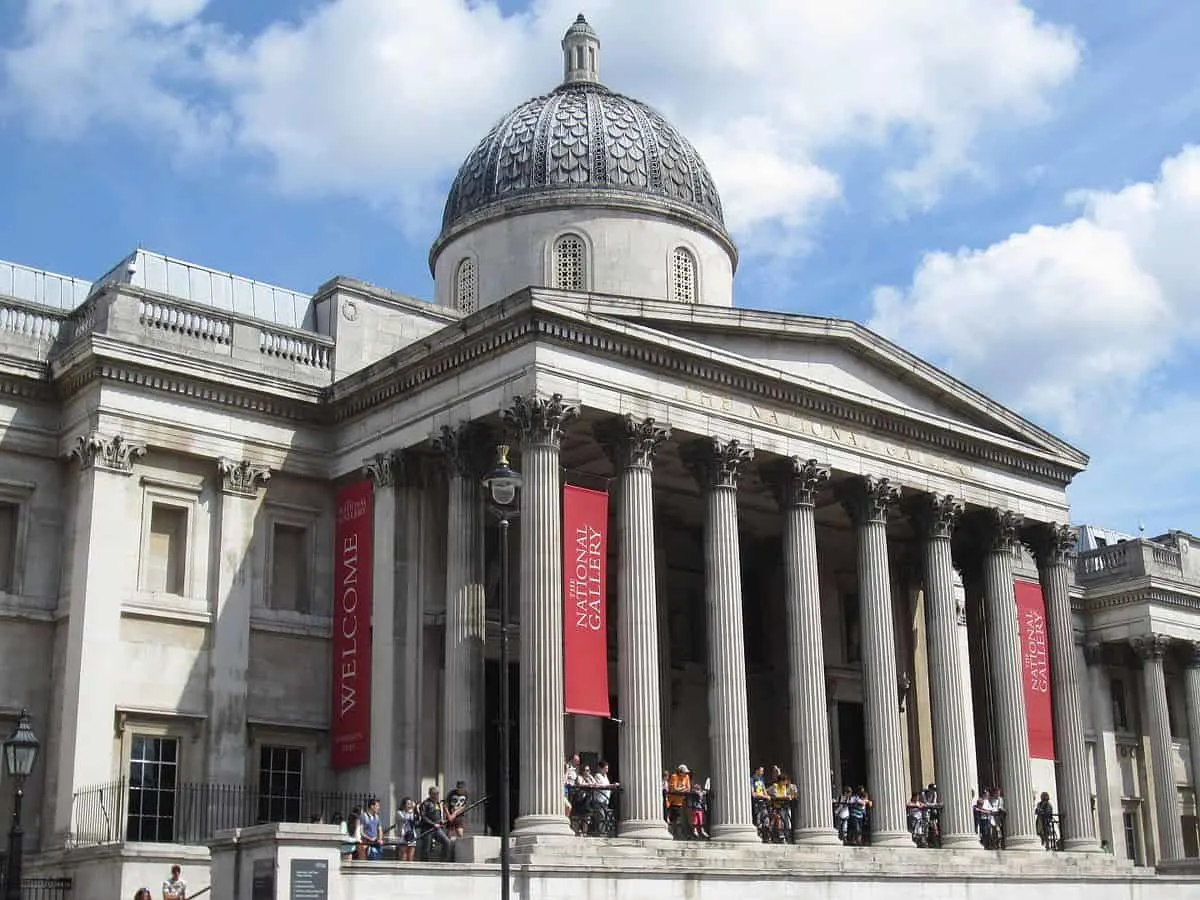One of the most fascinating paintings in the history of Western Art was created by a famous Renaissance artist, and in this post, you’ll discover the ultimate list of facts about the Arnolfini Portrait.
1. It was painted by a famous Early Netherlandish painter
The Arnolfini Portrait was painted in the year 1434 by Early Netherlandish painter Jan van Eyck. It was signed and dated by the artist with “Johannes de Eyck fuit hic 1434,” which translates to “Jan van Eyck was here 1434.”
Flemish painter Jan van Eyck (1380-1441) is considered to be one of the most important artists of the Northern Renaissance. About 20 of his paintings survived, all of which are considered to be absolute masterpieces.
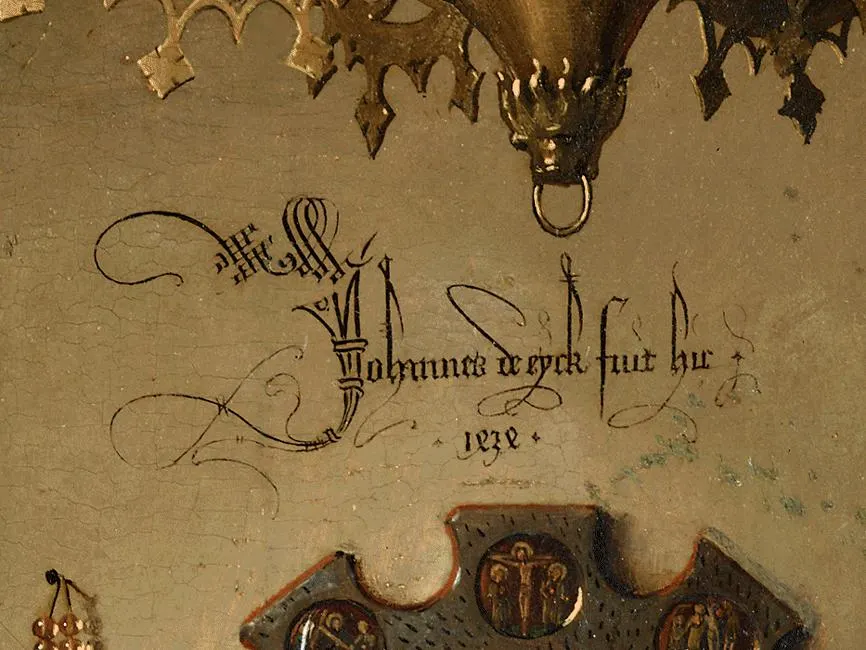
2. It’s considered to be a revolutionary painting
The painting is considered to be one of the most revolutionary paintings in history. It depicts two people in a contemporary setting as realistic as can be. It’s the first time in history that the artist became an eye-witness and we can look back to a realistic scene that happened over 600 years ago.
The use of light that penetrates into the room from the open window makes the scene especially realistic. It has therefore been described as the first genre painting, the portrayal of people in a common setting, in history!
3. It’s the oldest known painting used with a specific material
The painting wasn’t just revolutionary because it accurately depicts a scene from everyday life in the 15th century, it’s also the oldest and most famous surviving painting which was completely painted with oils instead of tempera.
This allowed the artist to depict extreme details, with some even suggesting he used a magnifying glass for this purpose.
4. Van Eyck used a particular style to create the painting
The artist created a setup in which he could really magnify the details and colors. This technique is referred to as “alla prima” or “wet-on-wet” and consists of applying multiple layers of virtually transparent glazes in order to perfectly capture minuscule details.
All these elements combined ensured the scene was depicted so realistically.

5. It depicts a rich Italian merchant and his wife

For a long time, it had been assumed that the painting depicted Italian merchant Giovanni di Arrigo along with his wife Giovana Cenami. A discovery in 1997 has made this assumption impossible because the couple only married in the year 1447, which was 13 years after the painting was created and 6 years after van Eyck died.
The general consensus today is that it depicts the man’s cousin, Giovanni di Nicolao Arnolfini, also a wealthy Italian merchant who lived in the Flemish city of Bruges, one of the major cities in Europe at the time.
6. The woman in the painting was possibly already dead
If the theory is correct, it would mean this was the second wife of Giovanni di Nicolao Arnolfini. Another theory suggests that the painting is in fact a Memorial painting and it depicts the first wife of the man named Costanza Trenta. She died in childbirth a year before it was created in February of 1433.
Some clues can be found which might confirm this theory, such as the snuffed candle above the woman, the black garb the man is wearing, and the fact that he holds his hand up as if he is praying for his dead wife.
It’s also confirmed that the couple was already married based on their position and the fact that the woman wears a headdress, something that was only done by married women at the time.
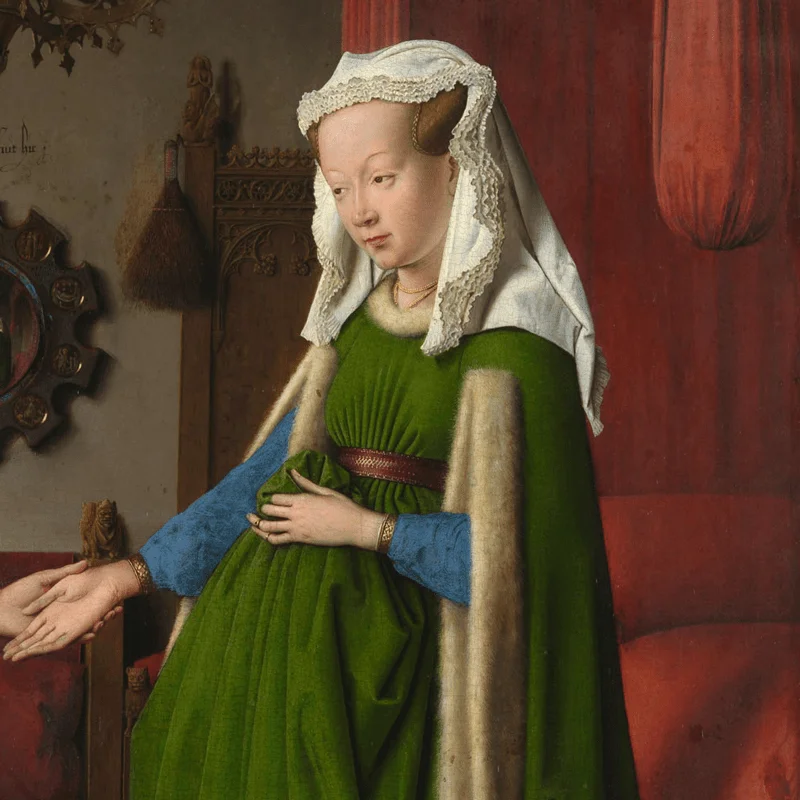
7. The mirror is surrounded by scenes from the Passion of Christ
Another clue pointing towards the notion that this might be a memorial painting is the mirror on the wall. This mirror is surrounded by scenes from the Passion of Christ.
All the scenes on the side of the woman scenes related to Christ’s death and his resurrection, the ones on the man’s side are all related to the life of Christ.

8. It wasn’t the only time that van Eyck painted the Italian
Van Eyck painted the same man once more 4 years after completing the Arnolfini Portrait. This painting is referred to as “Portrait of Giovanni di Nicolao Arnolfini” and the resemblance in both paintings is quite clear.
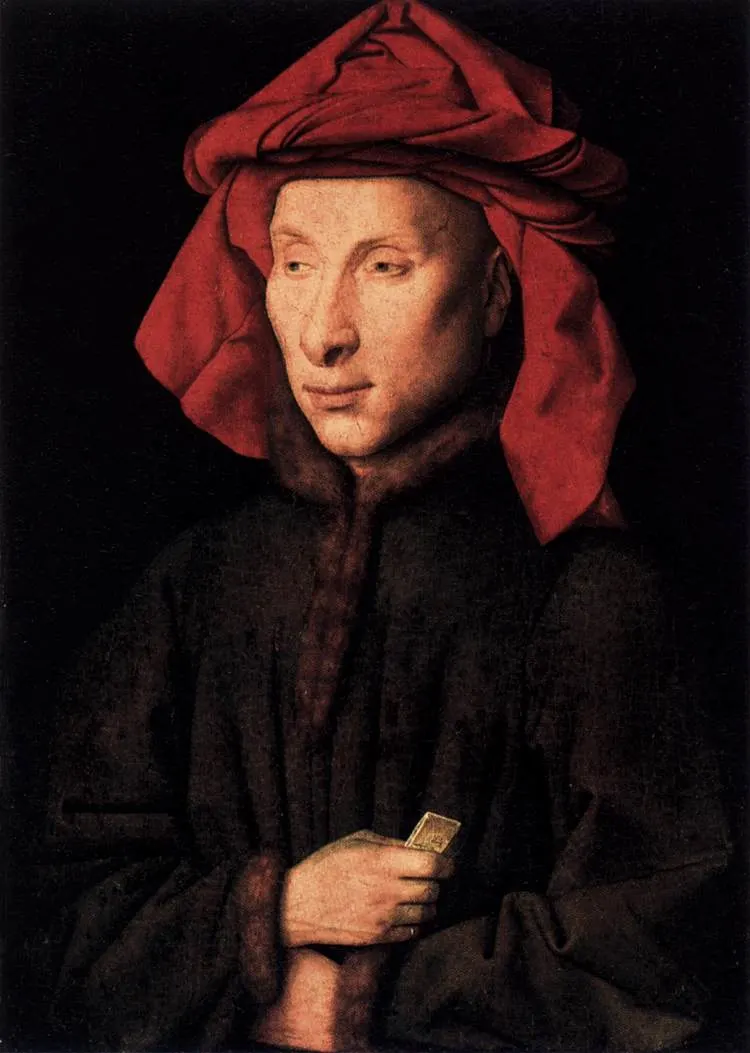
What’s even more remarkable is the fact that van Eyck depicted Arnolfini in a very similar manner to the way he presumably portrayed himself in the painting “Portrait of a Man in a Red Chaperon.”
This leads us to conclude that both men were most probably good friends.
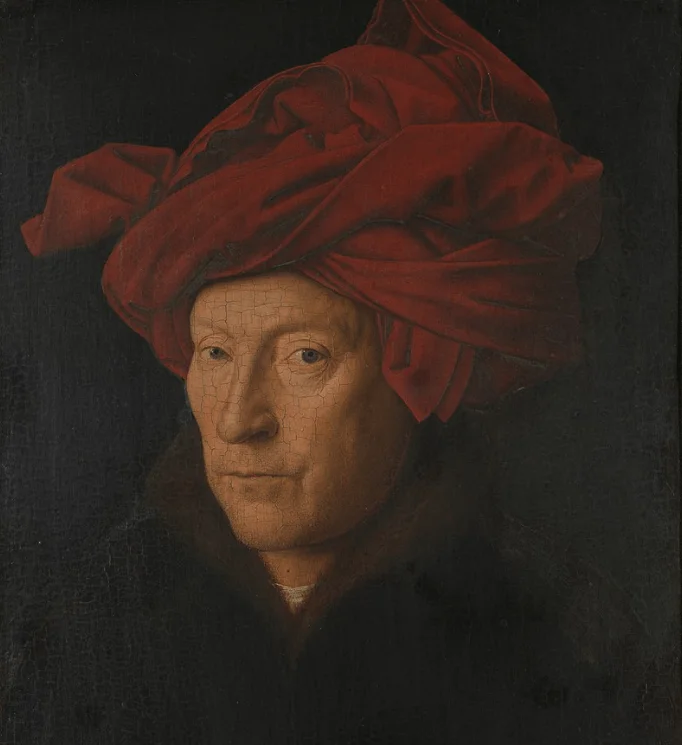
9. The couple’s clothes aren’t the only sign of wealth in the room
It’s believed that Arnolfini was a rich cloth merchant who was originally from Lucca, a city in the Tuscany region in Central Italy. He lived in Bruges which was one of the wealthiest cities in Europe at the time which means the man was most probably well off.
The clothes that the couple wears in the painting were considered to be worn by the very wealthy and would have been perceived as such by people living in this period.
The chandelier hanging from the ceiling and the Persian carpet on the floor are equally signs of extreme wealth, as well as the oranges to the left of the man. Oranges were an extremely expensive product in the northern part of Europe at the time and wouldn’t have been found in the houses of ordinary people.

10. We know what time of the year couple was portrayed
Despite the couple wearing clothes that are fully lined with fur, the painting depicts a scene in the early summer.
The room is located on the second floor and we can see a cherry tree outside which is bearing fruits just outside of the window.

11. The painting has been retouched multiple times
Even though the portrait is in extremely good condition, despite being nearly 600 years old, some retouching has been done to restore the original colors and fix some details.
These small touches have been done to the faces of the depicted people, the chandelier, and the mirror. The man’s tabard was originally much more purple than it appears today though.

12. Where is the Arnolfini Portrait located today?
The painting has been in the possession of royal families all across Europe since it came into the hands of Margaret of Austria in the year 1516.
It was acquired by the National Gallery in London, located on Trafalgar Square, for £600 in the year 1842 and is still on display at the museum today!
